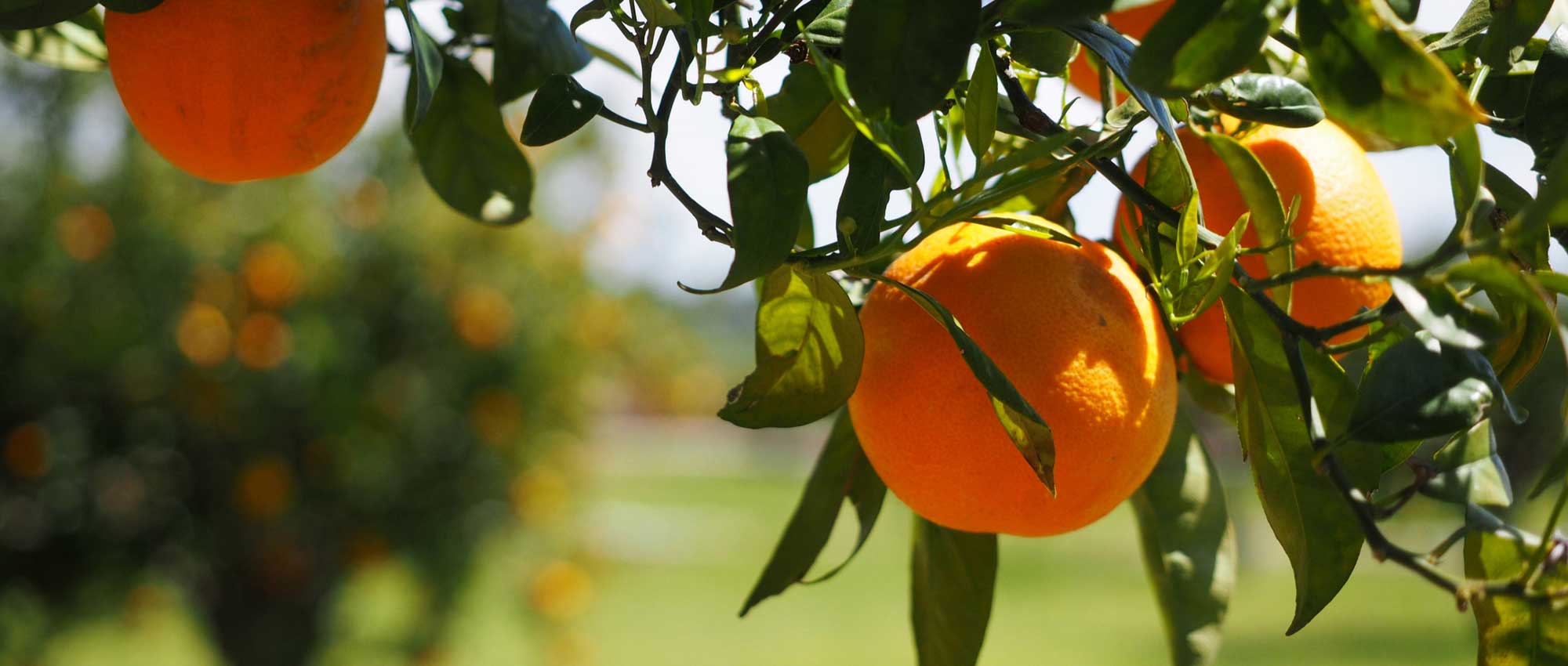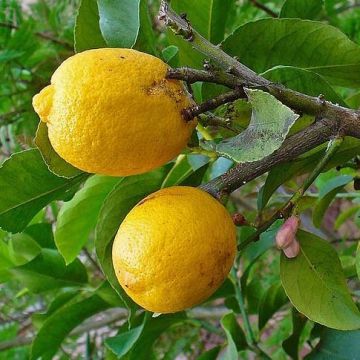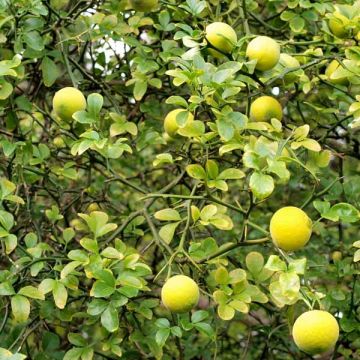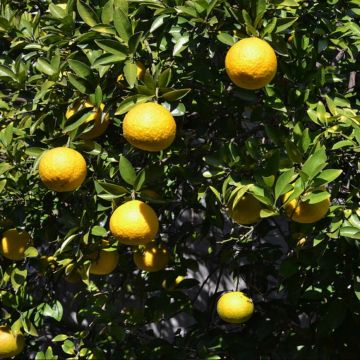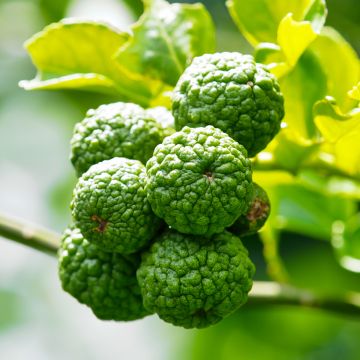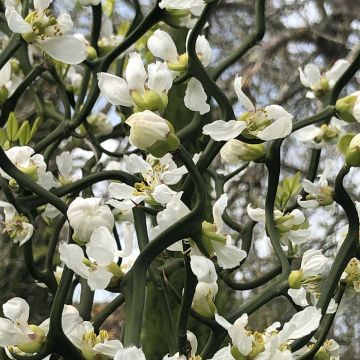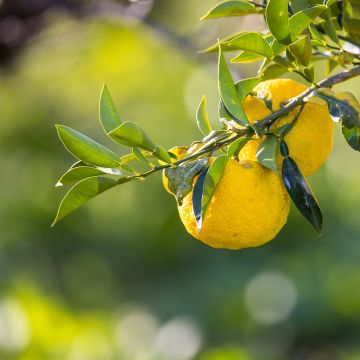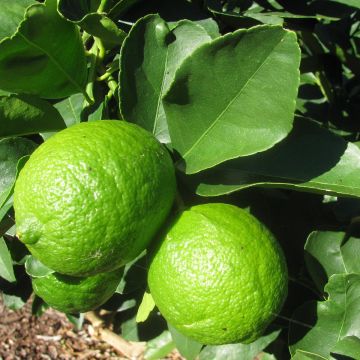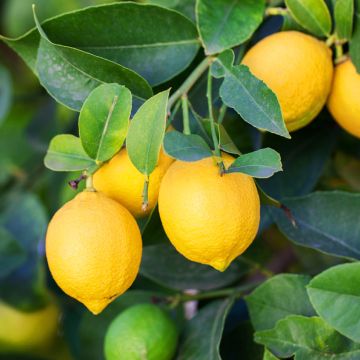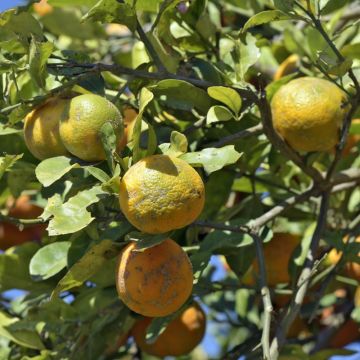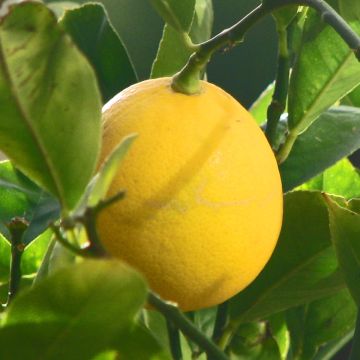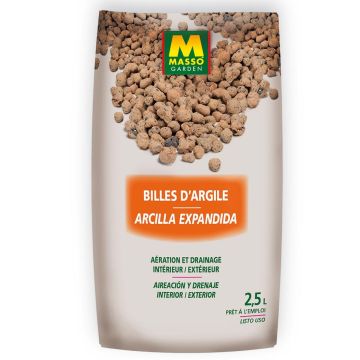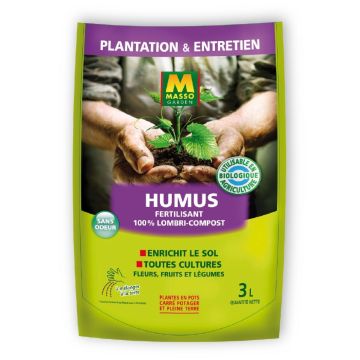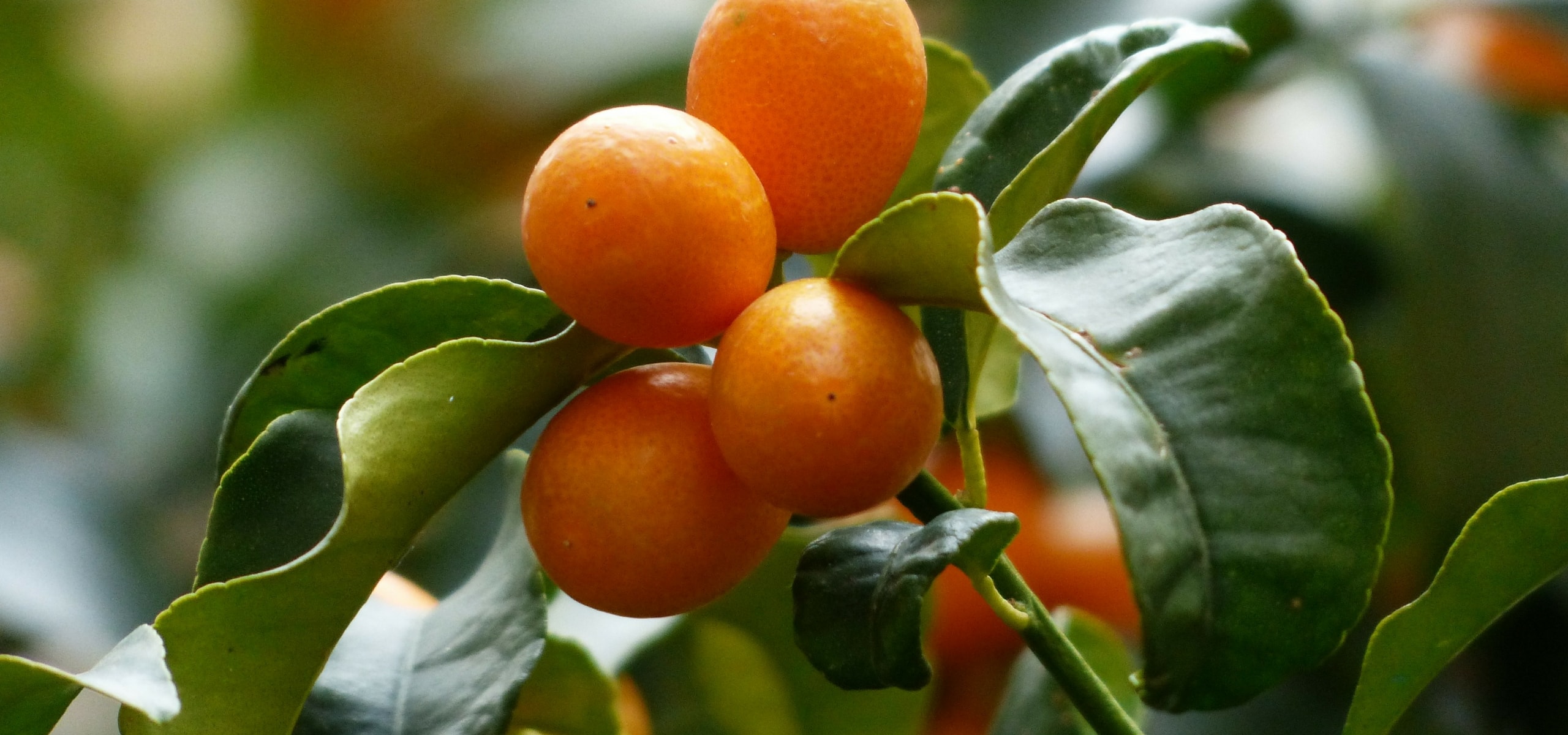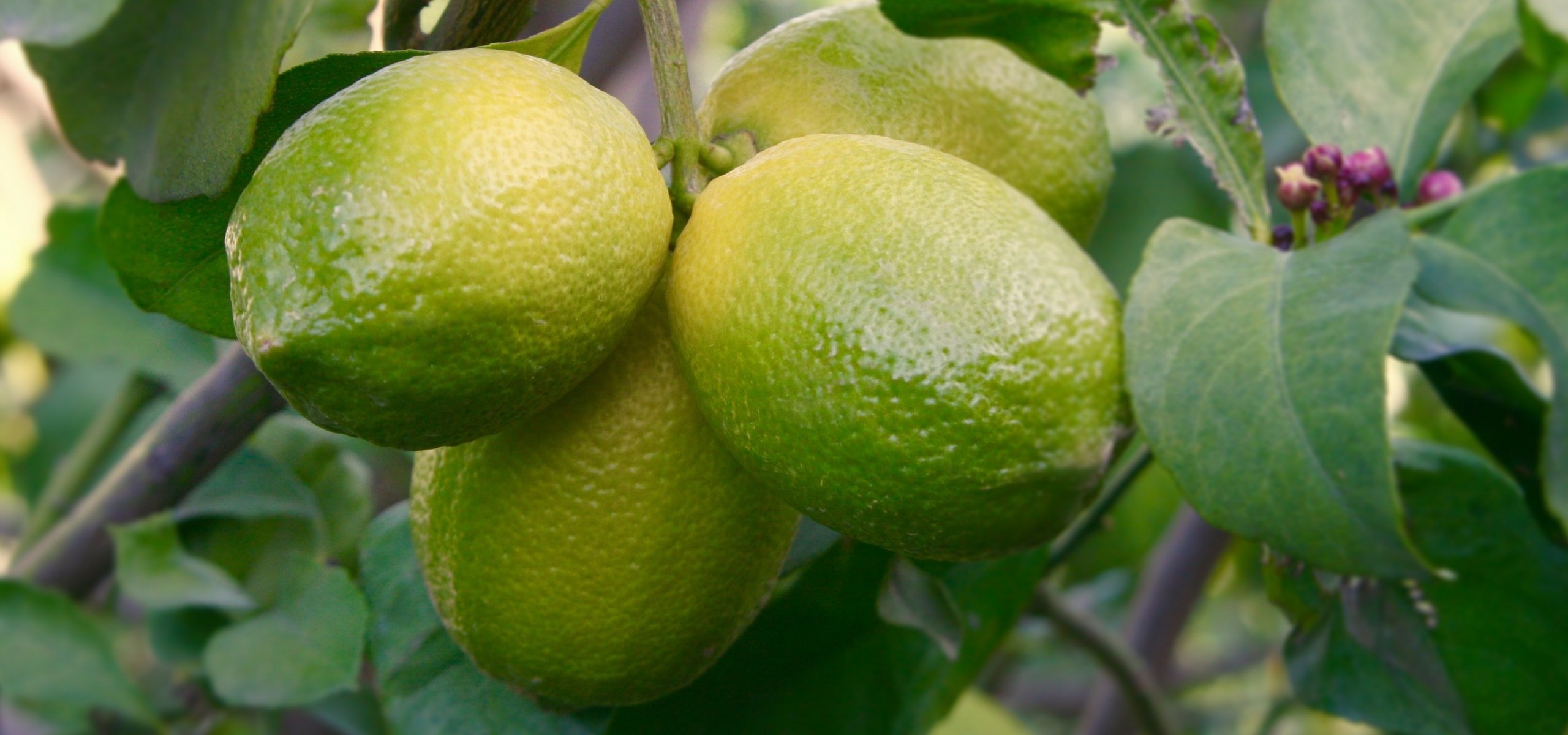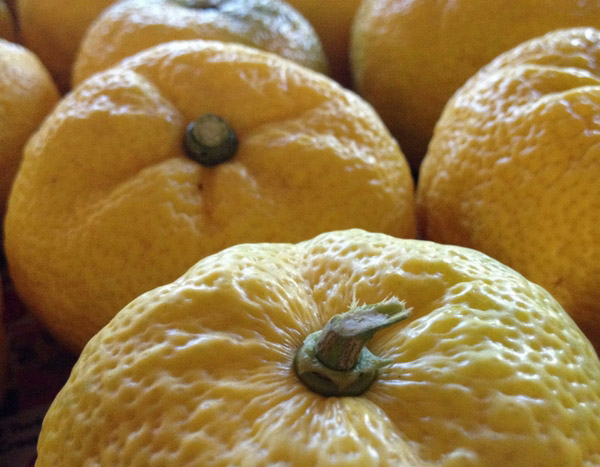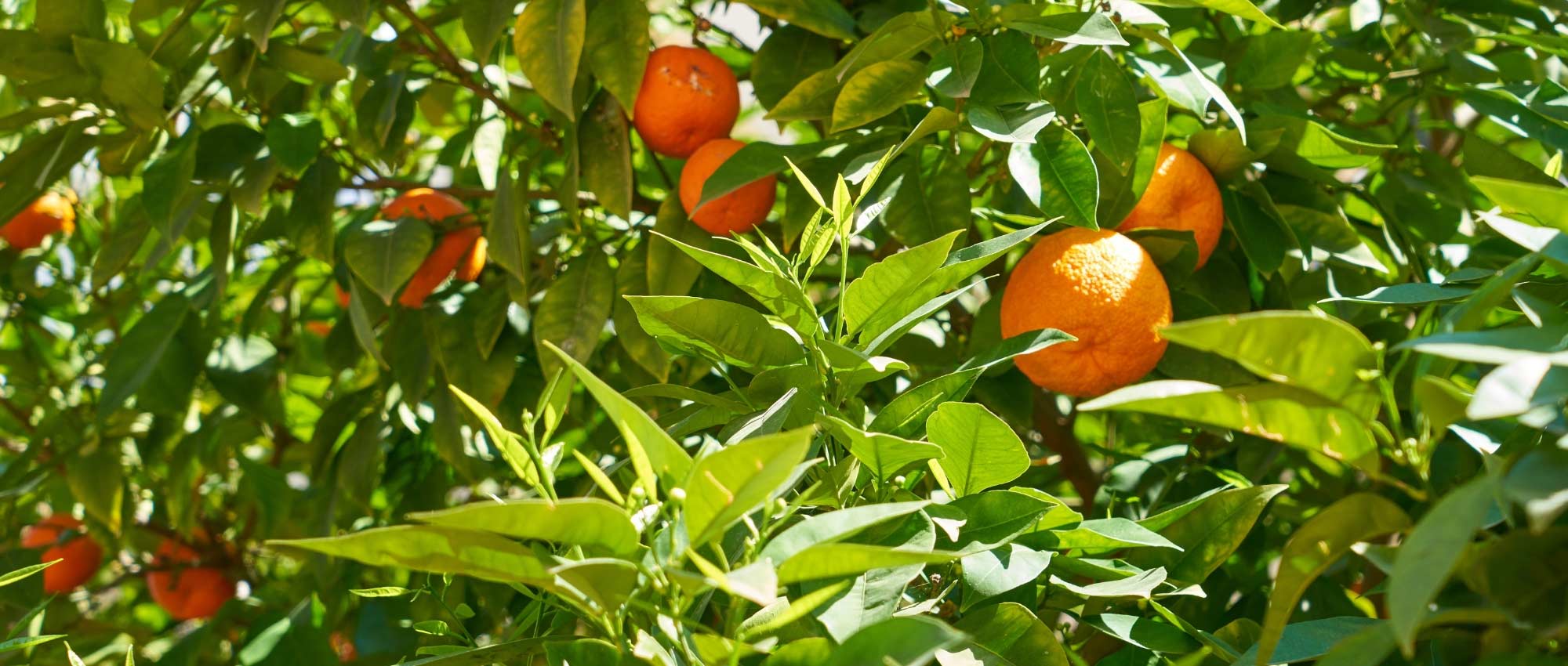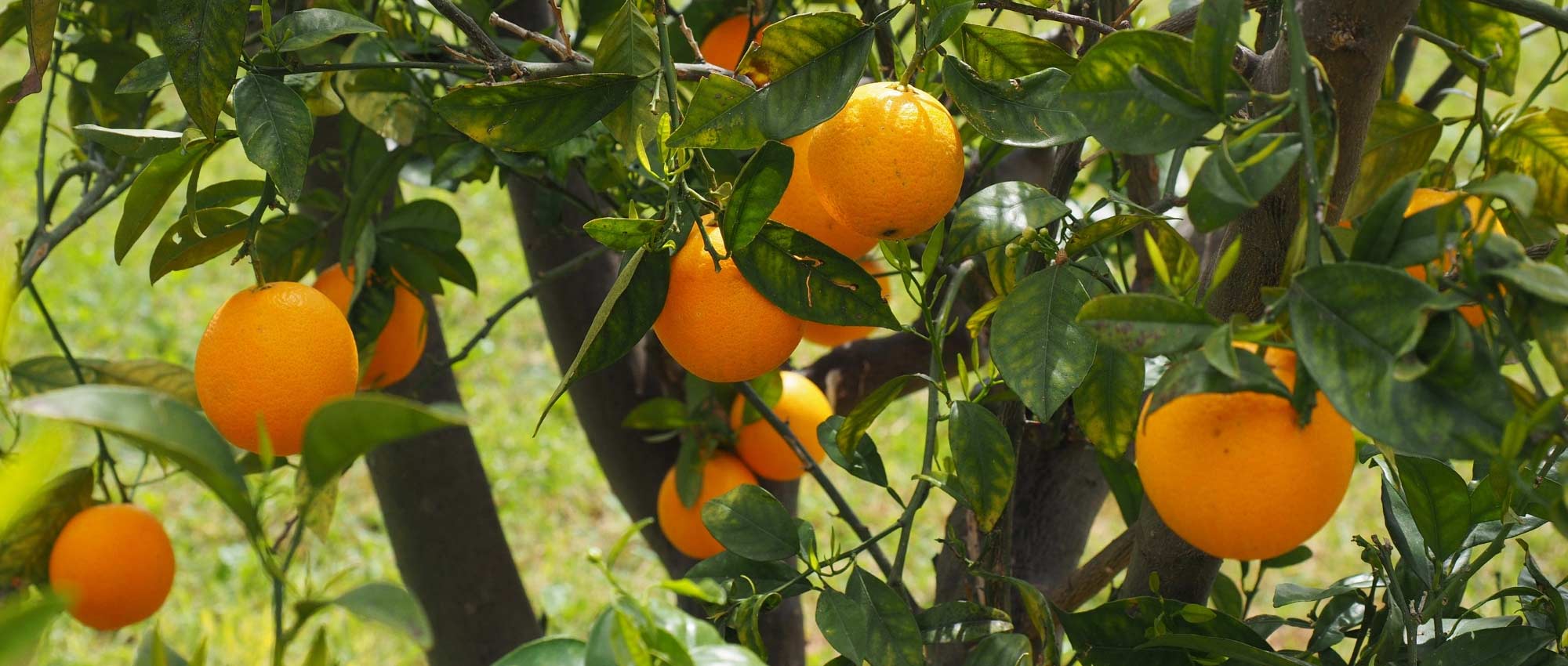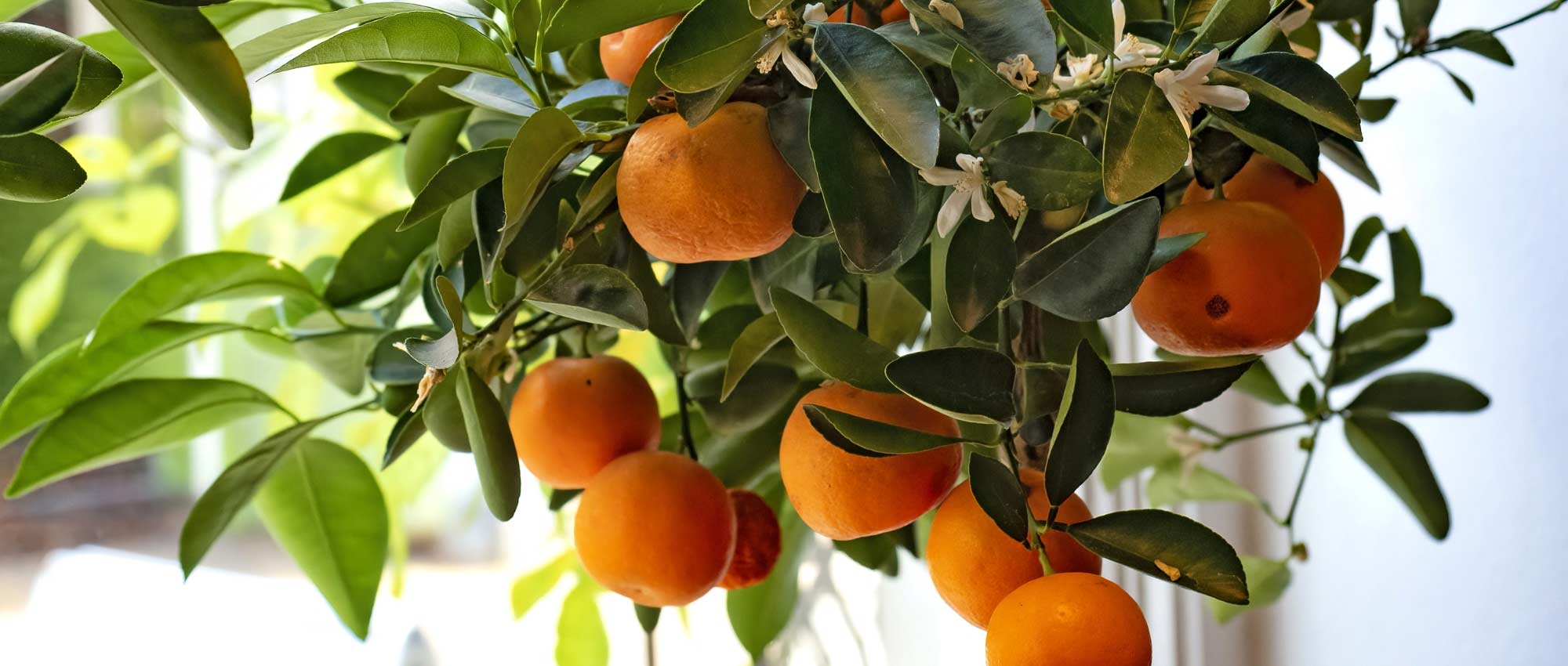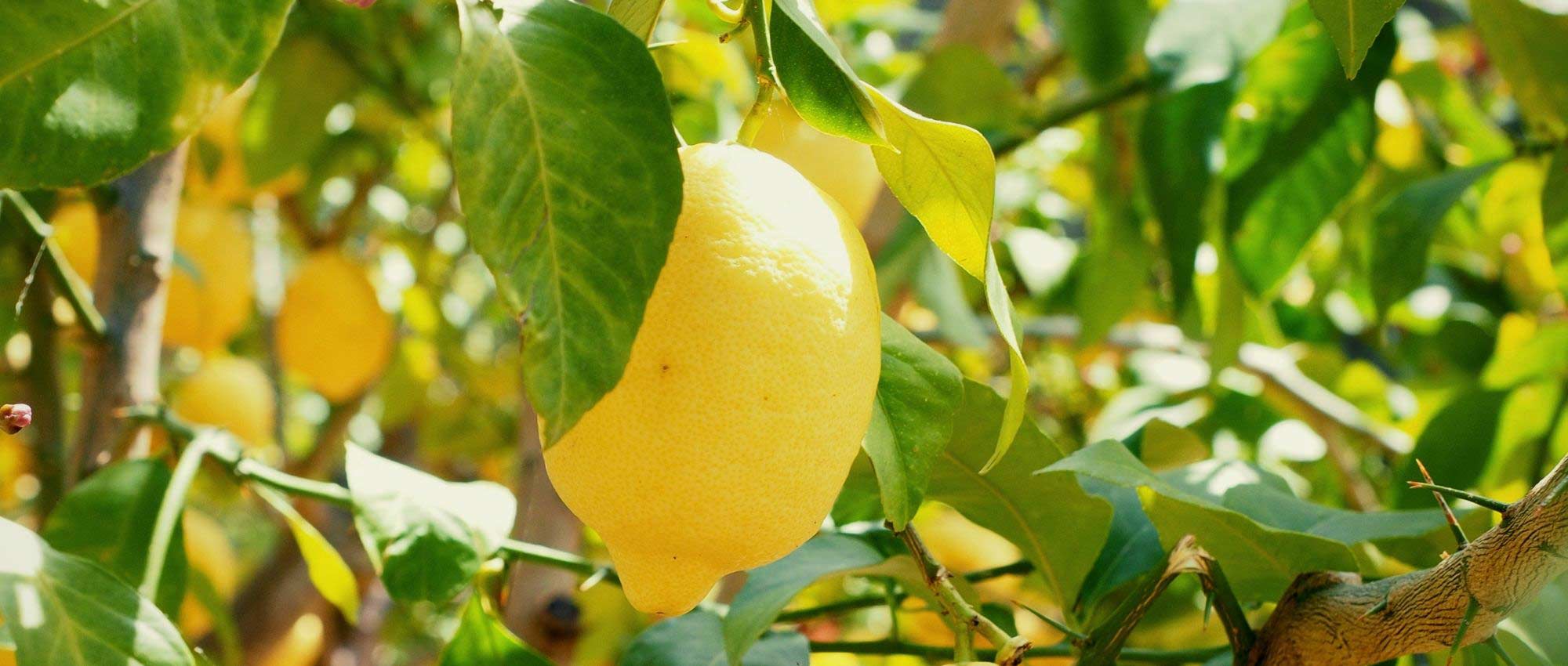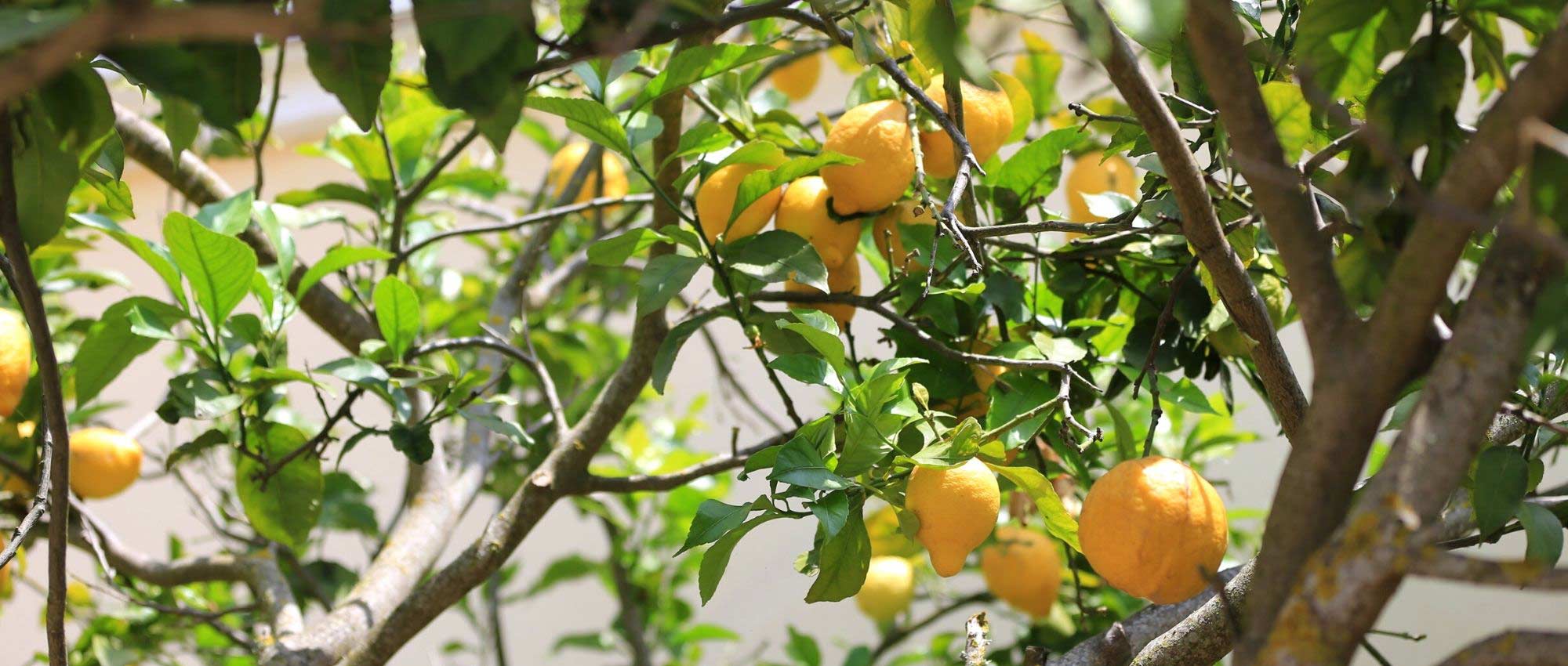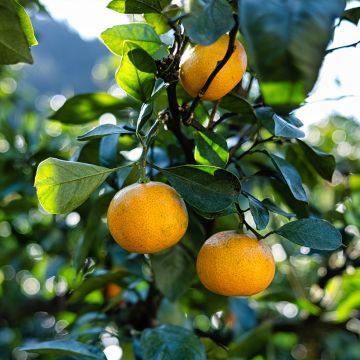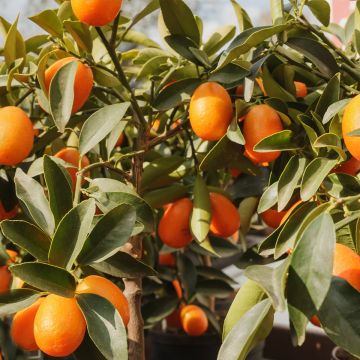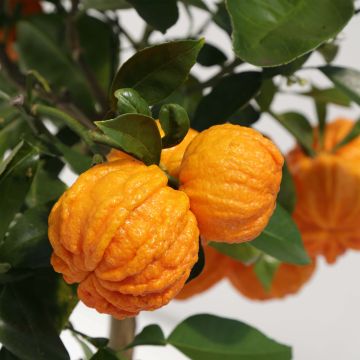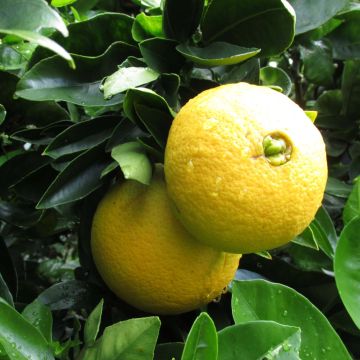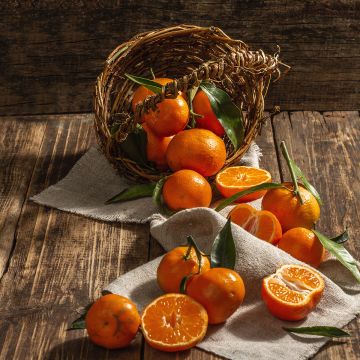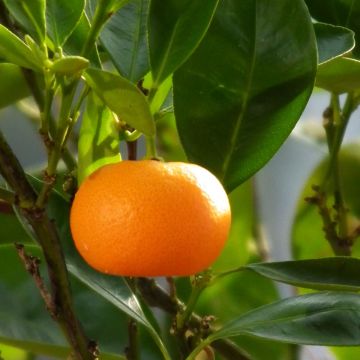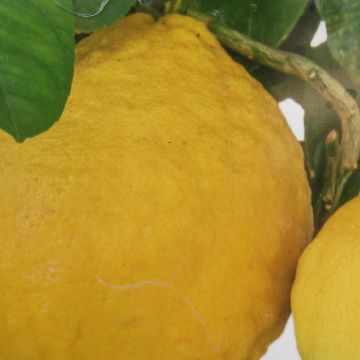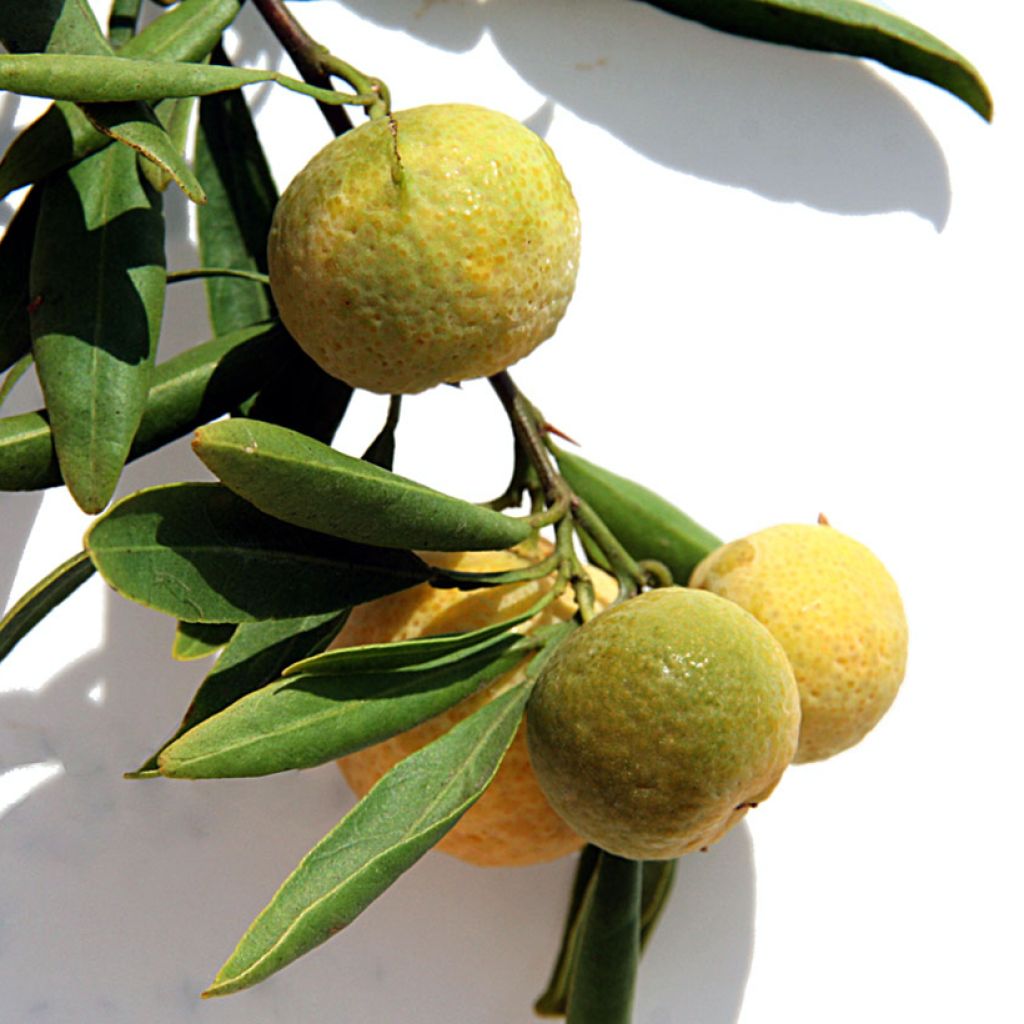

Citrus glauca - Desert lime
Citrus glauca - Desert lime
Citrus glauca
Desert Lime
Special offer!
Receive a €20 voucher for any order over €90 (excluding delivery costs, credit notes, and plastic-free options)!
1- Add your favorite plants to your cart.
2- Once you have reached €90, confirm your order (you can even choose the delivery date!).
3- As soon as your order is shipped, you will receive an email containing your voucher code, valid for 3 months (90 days).
Your voucher is unique and can only be used once, for any order with a minimum value of €20, excluding delivery costs.
Can be combined with other current offers, non-divisible and non-refundable.
Home or relay delivery (depending on size and destination)
Schedule delivery date,
and select date in basket
This plant carries a 24 months recovery warranty
More information
We guarantee the quality of our plants for a full growing cycle, and will replace at our expense any plant that fails to recover under normal climatic and planting conditions.
Would this plant suit my garden?
Set up your Plantfit profile →
Description
Citrus glauca, or desert lime, is a rare citrus tree native to the semi-arid regions of Australia. This bush is notable for its drought and heat resistance, tolerance to calcareous soils, and relative hardiness. It is full of charm with its early flowering and edible fruits resembling very tangy mini-clementines, harvested in late summer. The desert lime thrives in open ground in warm, dry, and sunny regions but can also be grown in pots to overwinter in cooler areas. The ideal citrus tree for dry gardens!
Citrus glauca, also known as the desert lime (desert lime in English), belongs to the Rutaceae family. Named Eremocitrus glauca until 2007, this botanical species was reclassified into the Citrus genus. Native to Australia, it is endemic to the semi-arid regions of Queensland, New South Wales, and South Australia. In its natural habitat, this citrus tree grows on poor, calcareous soils, often in areas where water is scarce. It can endure scorching temperatures of up to 45°C. This shrub or small tree has a bushy habit, typically reaching 1 to 2 metres in height, with a slightly smaller spread. In richer soil, it can grow to 3-4 metres in all directions. Its branches are usually thorny, a common characteristic among wild citrus trees. The leaves are small, narrow, and oblong, measuring 1.5 to 5 cm long and 2 to 12 mm wide. Their greyish-green colour and slightly leathery texture help reduce water loss. They are evergreen in winter, except in areas at the limit of its hardiness. The root system of this citrus tree is deep and well-developed, enabling it to efficiently capture water resources. The hardiness of Citrus glauca depends on the soil and the duration of frost: it is estimated that in well-draining, poor, and very dry soil, it can survive brief frosts of around -8 to -10°C. When grown in pots or in soil that retains more moisture, it perishes below -5°C. The flowers of Citrus glauca, though small, are fragrant, blooming between March and May, earlier or later depending on the climate. The small, whitish to greenish flowers attract pollinators such as bees. The fruits ripen around mid-September. They are small, spherical to slightly ovate or flattened, measuring up to 2 cm in diameter. Their thin, smooth skin has almost no flavour. Greenish at first, then turning yellow or even orange, it contains juicy, yellowish pulp with a strongly tangy taste reminiscent of lime, often seedless. These fruits are prized in Australian and international cuisine for making sauces, marmalades, desserts, confectionery, and beverages.
Citrus glauca is one of the few citrus trees that can be planted in a dry garden, in a not-too-cold Mediterranean climate, without the need for watering. Its grey-green foliage and bushy habit create an interesting contrast with plants of different textures. It makes an excellent defensive hedge plant due to its thorny branches, but can also be planted as a standalone specimen to highlight its shape and fruits. In containers, it adds an exotic touch to a sheltered and sunny terrace or balcony. It pairs well with Mediterranean spurges (Euphorbia characias), desert sages (Leucophyllum frutescens), and evergreen ceanothus like 'Skylark'. Together, they create an elegant and low-maintenance display, perfect for dry and hot climates.
Citrus glauca - Desert lime in pictures
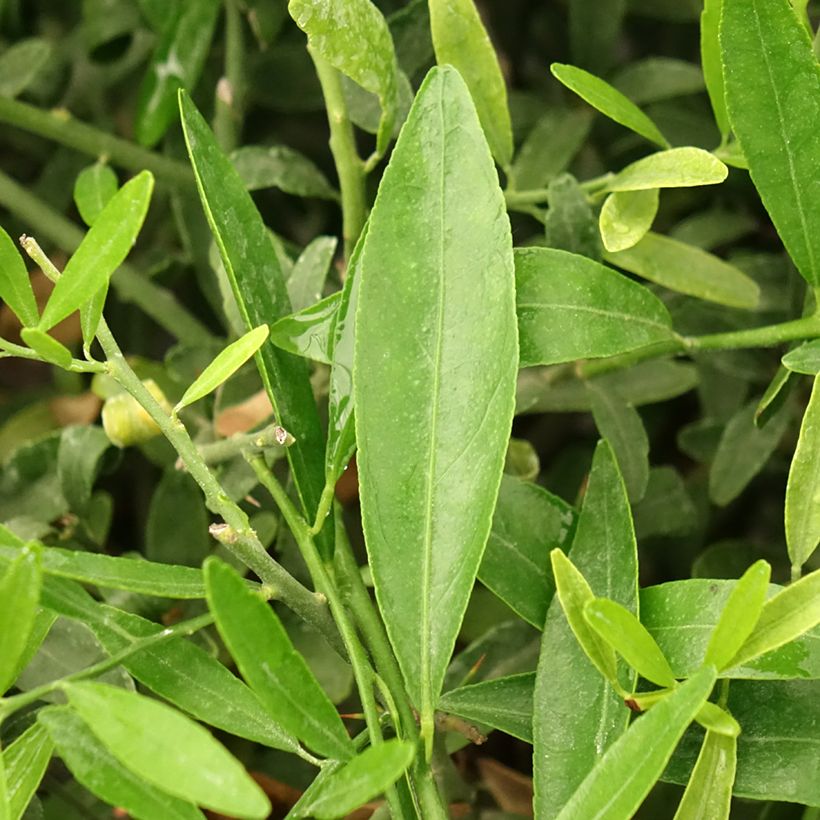

Plant habit
Flowering
Foliage
Botanical data
Citrus
glauca
Rutaceae
Desert Lime
Eremocitrus glauca
Australia
Other Lemon trees
View all →Planting and care
Plant Citrus glauca in spring, or even early autumn in a Mediterranean climate. Plant it in perfectly drained and poor soil, even chalky. In open ground, choose a spot in full sun and sheltered from cold winds. Dig a hole twice as wide as the root ball, and mix the excavated soil with gravel if necessary. You can also plant it on a slope to enhance the soil's drainage. It will withstand cold better under these conditions. Water occasionally after planting to encourage root growth, but avoid excess, as this bush dislikes overly wet soils.
In a pot, use a deep and wide container with drainage holes at the bottom, filled with a well-draining substrate made of citrus tree compost mixed with coarse sand. Place it in full sun. Water regularly from spring to late summer, allowing the substrate to dry out on the surface between waterings and emptying the saucer. Reduce watering in winter. Apply a specific citrus tree fertiliser in spring and summer to support fruit production. If frost is forecast, protect the tree with a thick winter fleece or move it into a greenhouse or bright conservatory.
Planting period
Intended location
Care
Planting & care advice
This item has not been reviewed yet - be the first to leave a review about it.
Similar products
Haven't found what you were looking for?
Hardiness is the lowest winter temperature a plant can endure without suffering serious damage or even dying. However, hardiness is affected by location (a sheltered area, such as a patio), protection (winter cover) and soil type (hardiness is improved by well-drained soil).

Photo Sharing Terms & Conditions
In order to encourage gardeners to interact and share their experiences, Promesse de fleurs offers various media enabling content to be uploaded onto its Site - in particular via the ‘Photo sharing’ module.
The User agrees to refrain from:
- Posting any content that is illegal, prejudicial, insulting, racist, inciteful to hatred, revisionist, contrary to public decency, that infringes on privacy or on the privacy rights of third parties, in particular the publicity rights of persons and goods, intellectual property rights, or the right to privacy.
- Submitting content on behalf of a third party;
- Impersonate the identity of a third party and/or publish any personal information about a third party;
In general, the User undertakes to refrain from any unethical behaviour.
All Content (in particular text, comments, files, images, photos, videos, creative works, etc.), which may be subject to property or intellectual property rights, image or other private rights, shall remain the property of the User, subject to the limited rights granted by the terms of the licence granted by Promesse de fleurs as stated below. Users are at liberty to publish or not to publish such Content on the Site, notably via the ‘Photo Sharing’ facility, and accept that this Content shall be made public and freely accessible, notably on the Internet.
Users further acknowledge, undertake to have ,and guarantee that they hold all necessary rights and permissions to publish such material on the Site, in particular with regard to the legislation in force pertaining to any privacy, property, intellectual property, image, or contractual rights, or rights of any other nature. By publishing such Content on the Site, Users acknowledge accepting full liability as publishers of the Content within the meaning of the law, and grant Promesse de fleurs, free of charge, an inclusive, worldwide licence for the said Content for the entire duration of its publication, including all reproduction, representation, up/downloading, displaying, performing, transmission, and storage rights.
Users also grant permission for their name to be linked to the Content and accept that this link may not always be made available.
By engaging in posting material, Users consent to their Content becoming automatically accessible on the Internet, in particular on other sites and/or blogs and/or web pages of the Promesse de fleurs site, including in particular social pages and the Promesse de fleurs catalogue.
Users may secure the removal of entrusted content free of charge by issuing a simple request via our contact form.
The flowering period indicated on our website applies to countries and regions located in USDA zone 8 (France, the United Kingdom, Ireland, the Netherlands, etc.)
It will vary according to where you live:
- In zones 9 to 10 (Italy, Spain, Greece, etc.), flowering will occur about 2 to 4 weeks earlier.
- In zones 6 to 7 (Germany, Poland, Slovenia, and lower mountainous regions), flowering will be delayed by 2 to 3 weeks.
- In zone 5 (Central Europe, Scandinavia), blooming will be delayed by 3 to 5 weeks.
In temperate climates, pruning of spring-flowering shrubs (forsythia, spireas, etc.) should be done just after flowering.
Pruning of summer-flowering shrubs (Indian Lilac, Perovskia, etc.) can be done in winter or spring.
In cold regions as well as with frost-sensitive plants, avoid pruning too early when severe frosts may still occur.
The planting period indicated on our website applies to countries and regions located in USDA zone 8 (France, United Kingdom, Ireland, Netherlands).
It will vary according to where you live:
- In Mediterranean zones (Marseille, Madrid, Milan, etc.), autumn and winter are the best planting periods.
- In continental zones (Strasbourg, Munich, Vienna, etc.), delay planting by 2 to 3 weeks in spring and bring it forward by 2 to 4 weeks in autumn.
- In mountainous regions (the Alps, Pyrenees, Carpathians, etc.), it is best to plant in late spring (May-June) or late summer (August-September).
The harvesting period indicated on our website applies to countries and regions in USDA zone 8 (France, England, Ireland, the Netherlands).
In colder areas (Scandinavia, Poland, Austria...) fruit and vegetable harvests are likely to be delayed by 3-4 weeks.
In warmer areas (Italy, Spain, Greece, etc.), harvesting will probably take place earlier, depending on weather conditions.
The sowing periods indicated on our website apply to countries and regions within USDA Zone 8 (France, UK, Ireland, Netherlands).
In colder areas (Scandinavia, Poland, Austria...), delay any outdoor sowing by 3-4 weeks, or sow under glass.
In warmer climes (Italy, Spain, Greece, etc.), bring outdoor sowing forward by a few weeks.






























